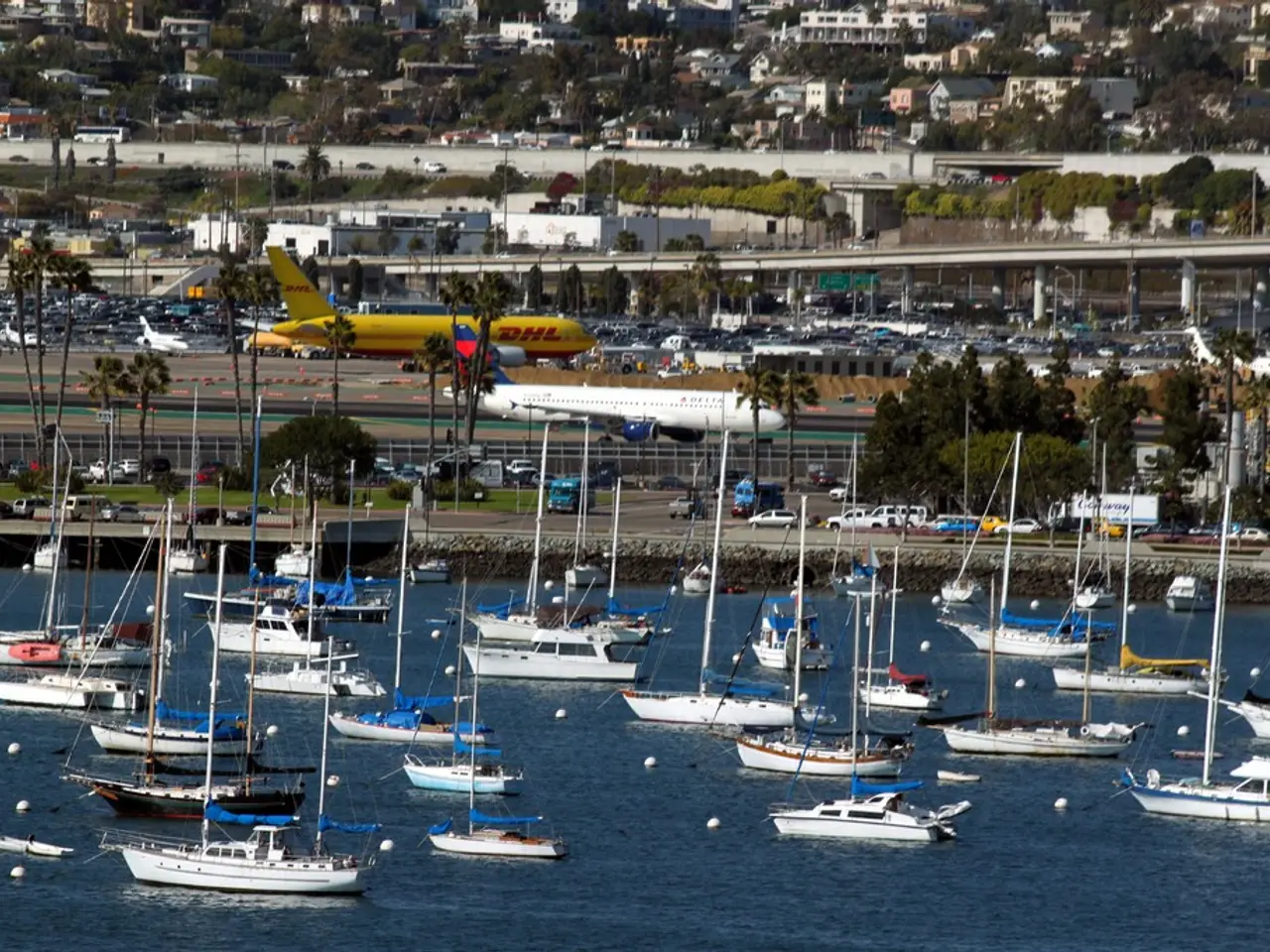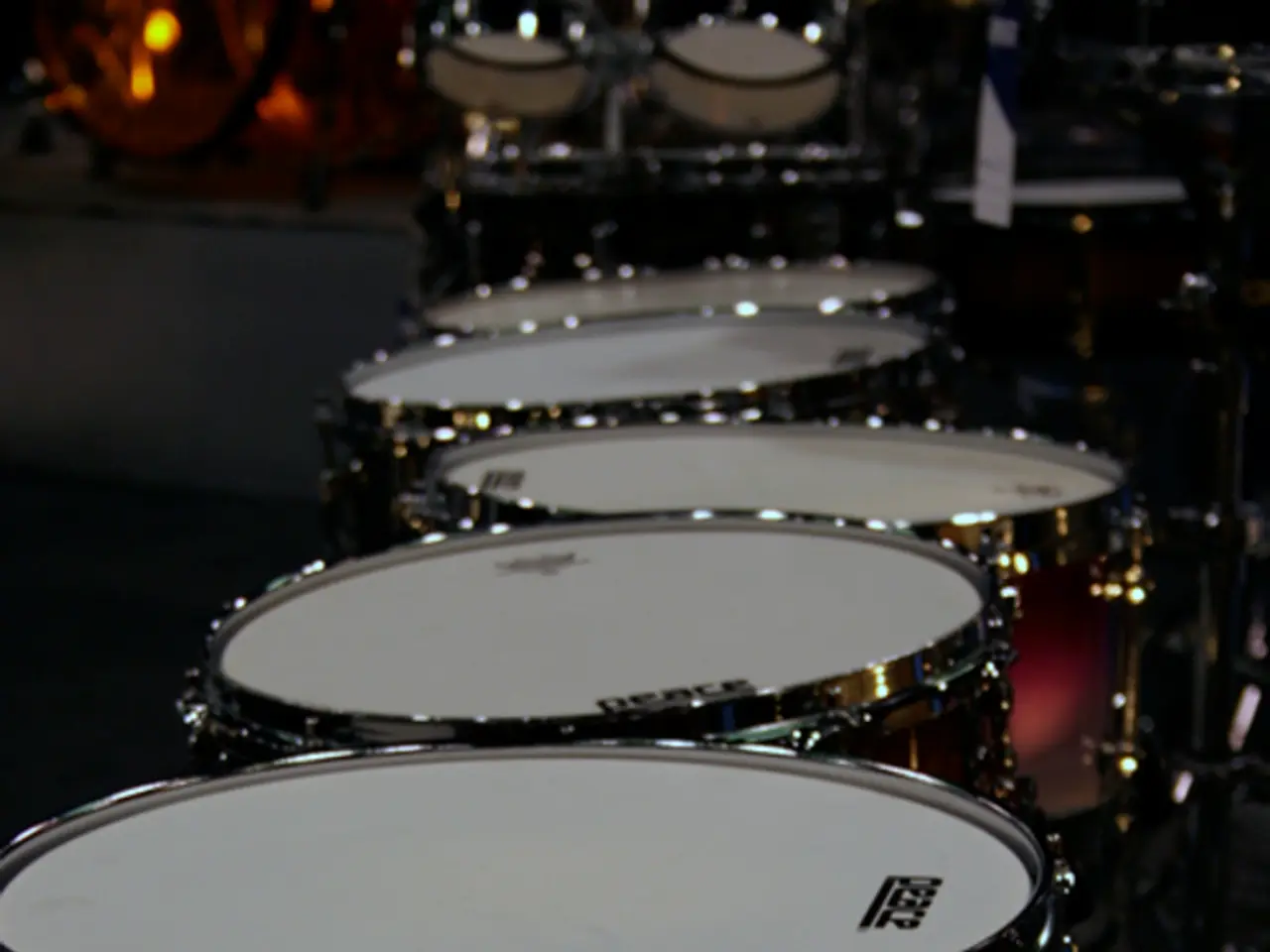Naval Vessel - Aircraft Carrier
Aircraft carriers, the open sea's air bases, have come a long way since their inception in the early 20th century. From humble beginnings as experimental platforms to today's highly sophisticated nuclear-powered warships, these floating cities of the sea have become central to naval strategy and global power projection.
Evolution and Key Events
The concept of aircraft carriers was first demonstrated by American pilot Eugene Ely in 1910, when he landed on a platform on a cruiser and took off from a battleship. This pioneering feat marked the beginning of a new era in naval warfare[1]. In 1911, Ely made history again by landing on the USS Pennsylvania, a transformation that is now considered historically significant[1].
The British Royal Navy developed the first true aircraft carrier, the HMS Argus, in the early 1920s. Built on a converted merchant ship, the Argus boasted an unobstructed flight deck, though it did not see action during World War I[1].
The U.S. Navy followed suit in 1922 with the commissioning of its first carrier, the USS Langley, which was converted from a collier[1]. Japan also joined the fray, launching the Hosho in the same year, the first carrier designed from the keel up[1].
During World War II, aircraft carriers became central to naval warfare, replacing battleships as the decisive capital ships. Battles such as Midway and the Coral Sea exemplified their strategic importance[1].
Advancements during the Cold War led to larger carriers with nuclear propulsion, catapult-assisted takeoff, and arresting gear for aircraft recovery. Today, the U.S. Gerald R. Ford-class, starting with CVN-78 Gerald R. Ford commissioned in 2017, represents the latest generation with advanced technology and increased efficiency[4].
Current Use by Countries
The United States leads the way in aircraft carrier technology, operating the most and largest nuclear-powered carriers (Nimitz- and Ford-class), which serve as mobile airbases at sea[3][4]. Other navies such as the United Kingdom, France, Russia, China, and India also operate carriers or carrier-capable ships. For example, the UK operates the Queen Elizabeth-class, China has the Liaoning and Shandong, and India operates INS Vikramaditya[1].
Technical Aspects
Modern aircraft carriers are equipped with catapults for launching jets, arresting wires for landings, and flight decks designed to face into the wind to aid aircraft operations[1]. They also include extensive weapons systems, survivability upgrades, and can cost billions to build and maintain[3].
Summary
Aircraft carriers have evolved significantly since the early 20th century, from wooden ships used to distribute balloons to nuclear-powered warships carrying a large number of fighters, strike aircraft, helicopters, and other types of aircraft. They allow a navy to use air power worldwide without depending on local bases, and tactically or strategically, they have replaced the battleship as the flagship of a fleet[1][3][4].
Today, aircraft carriers are known as Super Aircraft Carriers and are dominated by 10 countries: United States (11), Italy (2), Russia (1), Thailand (1), France (1), Spain (1), India (1), Brazil (1), China (1), and the UK (planned to use 2 in 2020). These floating cities of the sea continue to shape the landscape of naval warfare and global power dynamics.
[1] History.com Editors. (2020, July 28). Aircraft Carrier. History.com. https://www.history.com/topics/world-war-ii/aircraft-carrier
[2] History.com Editors. (2020, July 28). First Aircraft Carrier. History.com. https://www.history.com/this-day-in-history/first-aircraft-carrier-launched
[3] U.S. Department of Defense. (2021, March 12). Aircraft Carriers. U.S. Department of Defense. https://www.defense.gov/Explore/Features/Article/Article/2583496/aircraft-carriers/
[4] U.S. Naval Institute. (2020, December 11). USS Gerald R. Ford (CVN 78). U.S. Naval Institute. https://www.usni.org/ships/ship-class/uss-gerald-r-ford-cvn-78
The technological advancements in aircraft carriers during World War II made them central to naval warfare, rendering battleships less significant. Advancements during the Cold War included larger carriers with nuclear propulsion, catapult-assisted takeoff, and arresting gear, as seen in the U.S. Gerald R. Ford-class, which represents the latest generation of aircraft carriers with advanced technology and increased efficiency.




